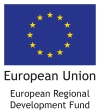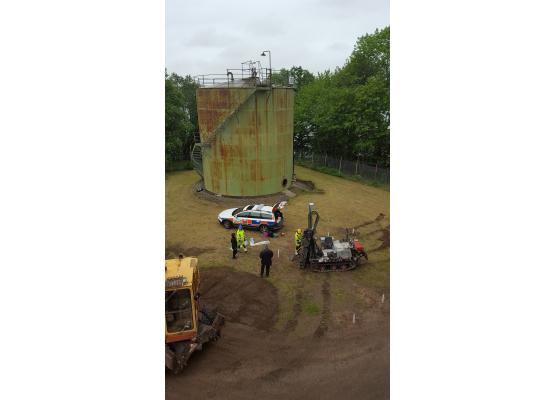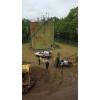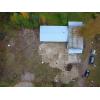In English
Traditional remediation of contaminated sites usually includes digging and bulldozing away the contaminated soil to another location, in order for the site to be remediated and re-used for different purposes. As a consequence the hazardous substances then are moved from one site to another, and that is not a sustainable solution. In the INSURE project, that started in autumn 2015, new methods are tested to stimulate bacteria to degrade contaminants.
The overall aim for EU strategy for the Baltic Sea region (EUSBSR) is to encourage joint problem-solving, and to taking advantage of the opportunities that cross-border cooperation provides. One of the priority areas in the strategy’s Action Plan is “Hazards”, with focus on reducing the use and impact of hazardous substances. A prioritized action under “Hazards” is networking on regional level regarding “Mitigate and remediate contamination”, where the aim is to reduce hazardous substances from former emissions to the Baltic Sea, as they still cause negative effects in the ecosystem. And here the Central Baltic programme project INSURE has the ambition to make a difference.
Un-used industrial land with contaminants – or brownfield land as it is called - is found in all countries. It is a problem not only because the land cannot be exploited as long as the soil is contaminated, but more importantly as there are risks for the general public’s health and the environment as long as the problem is not dealt with.
Smart and cost effective solutions
The project acronym INSURE stands for “Innovative Sustainable Remediation”, and the project is looking into if it is possible to achieve cost effective sustainable solutions to the problem without digging and moving the contaminated soil from one place to another. In the autumn 2017 I met with Project Manager Magnus Kviele at the County Administrative Board of Östergötland, Sweden, who explained more:
- The overall aim with the project is decreasing the impact of hazardous substances to the environment from the contaminated sites, but more concrete the main aim is to get away from traditional remediation methods and try out other smart and cost effective solutions. Often these sites are attractively situated for exploiting when planning and developing a city. Results that show how this could be done are the most important expected results from this project.
The methods used in the project differ in different pilot sites as it is important to try to find out which ones are the best. At one site phyto-remediation is tested, where plants are used to clean the contaminated soil, e.g. tree-plants from Aspen-Tree. Other techniques are biological and chemical methods where electricity and nutrients are used in combination to break the contaminations down. Within the frame of the project no full remediation of the brownfields will be carried out, but after the project has ended the aim is to do that by using one of the alternative methods if positive results.
Support to enterprises and open data
The project started in the autumn 2015, and lasts till August 2019. So I ask about which results they will have achieved by August next year. Magnus Kviele tells that, apart from the testing of different methods in some pilot areas in the partner regions, the aim is to develop the overall work with contaminated sites. How will that be done?
- We will do that by developing supervision and management methods how to tackle the problems, and by developing technical tools for the dissemination of the knowledge about contaminated sites.
And he continues:
- A major part of the project is to develop the dialogue with enterprises regarding how to tackle contaminated sites, and support them to include contaminated sites in the self-monitoring process. By planning this work in a better way they can select more sustainable remediation alternatives.
Additionally, a database containing information about the existing contaminated sites, and a guide for how to work with it, are developed and disseminated to the municipalities. GIS maps are produced showing the investigated and contaminated sites. Furthermore, new 3D maps will be produced in the project showing how the contaminants move into the water and spread to different geographical areas.
In line with the EU Commission’s Open data policy, a mobile phone app also will be produced where all this information can be found. It is valuable that this public data become available for the public as it will serve as very useful information for consultants, property speculators and municipalities for their planning and use of land. This kind of app is also very handy when being away from the office, and when out in nature.
Success factors for cross-border projects
As a total there are seven project partners involved: the County Administrative Board of Östergötland, Sweden; Motala Municipality, Sweden; Latvian Environment, Geology and Meteorology Centre in Latvia; Vidzeme Planning Region, Latvia; Valmiera City Council, Latvia; Populus Group Oy, Finland; University of Helsinki in Lathi, Finland.
According to Magnus Kviele the cross-border cooperation has been valuable as it has allowed them to collaborate with project partners that have a different background, and that are skilled in these alternative techniques. An important aim of the project is to get an insight in other ways to deal with these issues.
When I ask about the success factors when you work in a cross-border project I get the reply that it is important to work with the right project partners, to form a good application, and to expect that there will be misunderstandings. Magnus Kviele recommends that vital concepts are being defined already in the application phase, to make sure that you discuss the same thing. He says that it is usual to assume everyone is on the same page if no one has objections, but maybe they are not. Make sure of that, or you will regret it a year later when the project work begins.
Valuable long term results
Finally I ask if the INSURE project will change our lives for the better, and get the reply that no major effects will come out of the project in the short term as there is no full remediation of the contaminated sites carried out. But in the long term Magnus Kviele is hopeful:
- In the long term the result might be very useful. National authorities in the partner countries, like for example the Environmental Protection Agency in Sweden, are very interested in the results from our test with alternative remediation methods, and that is very satisfying. If the contaminants are removed, we will contribute to improve not only the environment, but also the general public’s health. With this project we have taken significant steps to improve the supervision and management of contaminated industrial land.






